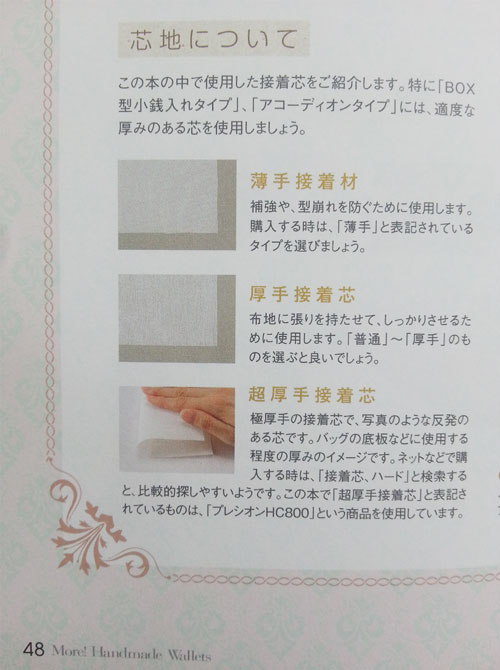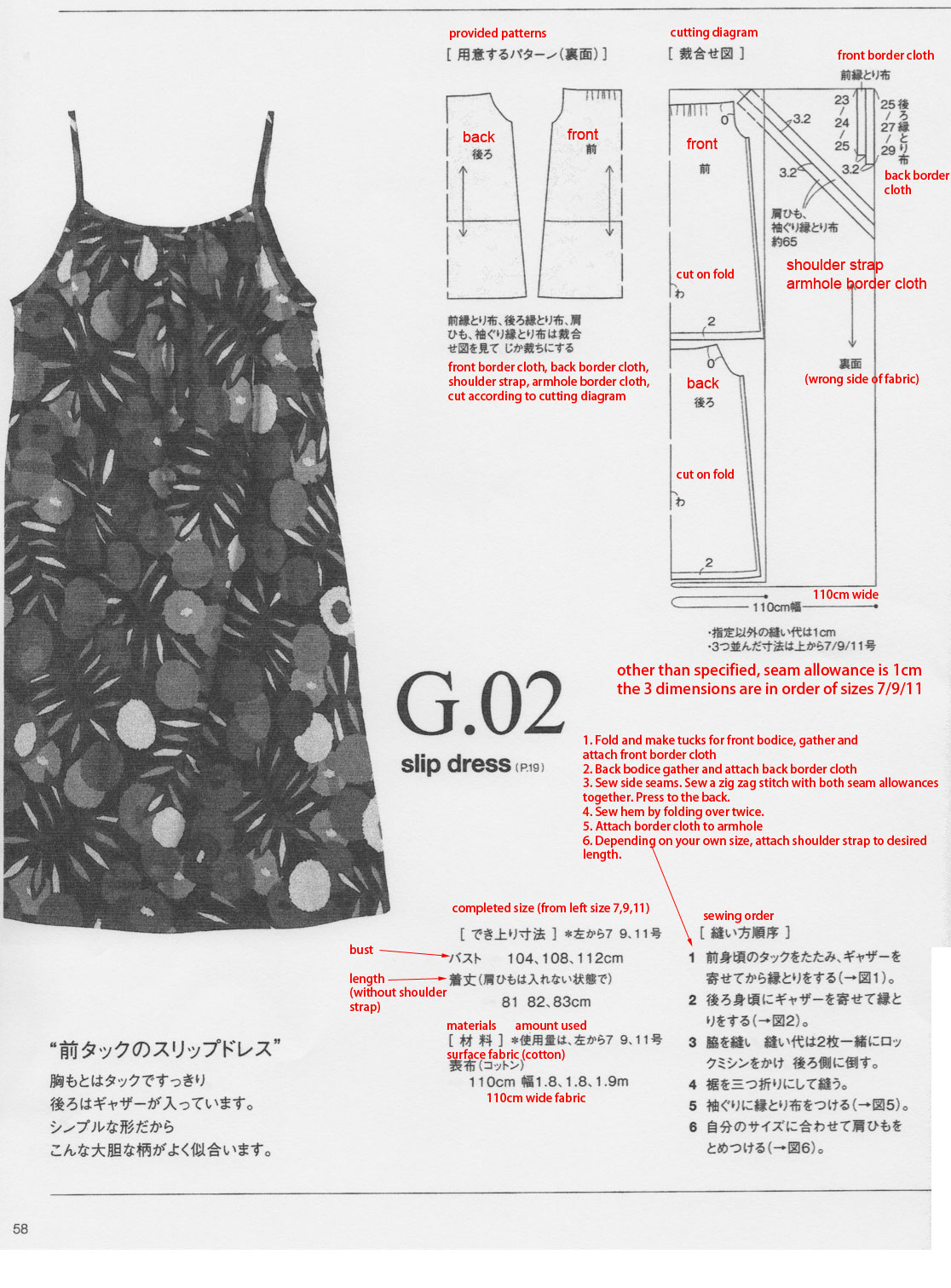Today’s translation request is from Yulia, who needed some help translating the different types of interfacing used in this book – More Handmade Wallets that I reviewed quite a while ago.

About interfacing
An introduction about the interfacing used in this book. In particular the [Box type coin pouch], [Accordian type], we have to use the appropriate interfacing thickness.
Thin fusible interfacing
It is used to strengthen and prevent from getting out of shape. When you buy, let’s select the type labelled “thin” interfacing.
Thick fusible interfacing
Used to support fabric under tension. You should opt for the ones labelled [Normal] to [thick].
Ultra-thick fusible interfacing
A very thick interfacing, it will “rebound” as in the photograph.(“rebound” is exact translation of the term but I think it means to describe that the material is quite stiff and holds its shape well, and will spring back when folded over like in the picture). This type of interfacing is often used for bottom base of bags, the thickness is shown in the image. When buying on the internet, search using keywords [Interfacing – hard], it is easy to find. In this book, the interfacing used is “Puression hc800” (a brand of interfacing) (This seems to be an old model number, but you can refer to this page which shows you a similar product from the same manufacturer) http://item.rakuten.co.jp/nakanotetsu/sin-hc-800/
Ok I hope I am not too far off in my translation 😛
Hope this clears up your doubts on the type of interfacing to use Yulia, and good luck for your sewing projects!





1 Comment
Well done, Yi Farn! Thank you very much for translating the article. Now I have a better understanding on how to pick the right interfacing for each project featured on the book.